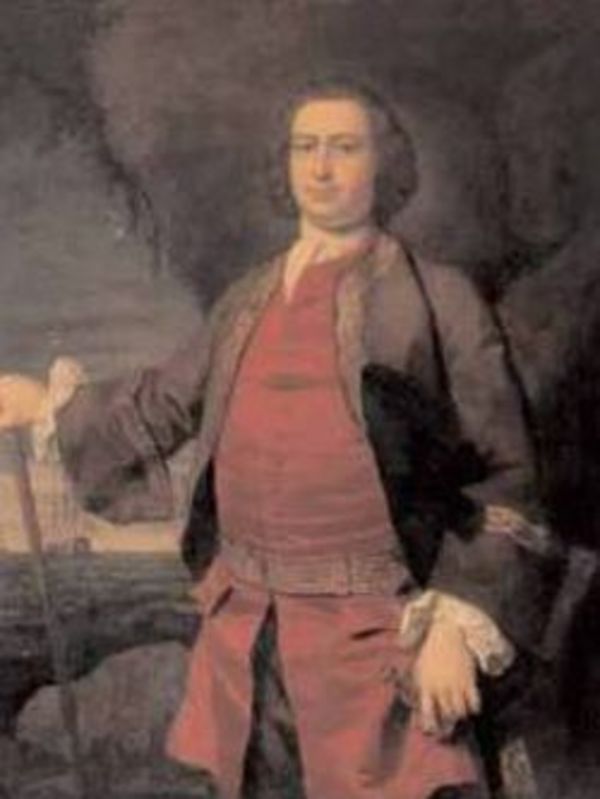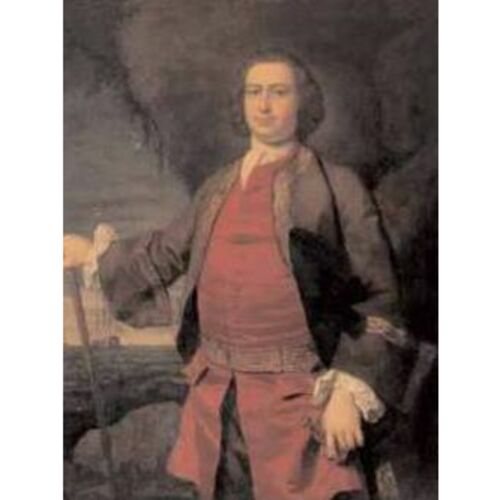
Source: Link
BONFOY, HUGH, naval officer, governor of Newfoundland; b. c. 1720; d. 12 March 1762.
Hugh Bonfoy entered the Royal Navy as a midshipman in the Somerset in 1739 and was promoted lieutenant in 1744. The following year he was commissioned captain in command of the Greyhound, and later commanded the Augusta and the Berwick, mostly in home waters.
In May 1753, commanding the Penzance, Bonfoy was commissioned governor of Newfoundland and received the usual Heads of Enquiry; he arrived at St John’s on 24 July. The Board of Trade had for some time been concerned with the number of Irish “papists” in the country, and apparently asked Bonfoy to look into their conduct and make the first systematic enumeration of them. He estimated the number of residents in Newfoundland as 2,683 Irish and 1,816 English, the latter figure being based on an incomplete census. The number of Irish had grown rapidly since the early 1700s, when English fishing ships, stopping at Irish ports on their way to Newfoundland, had begun to take Irishmen on their crews; others soon came to seek employment with the resident fishermen. Many of these Irishmen stayed in the island after the fishing season ended. According to Bonfoy, the Irish who remained during the winter stole from the inhabitants and traders, having no other means of subsistence, and were the cause of many disorders. There had, however, been no cases for trial by the court of oyer and terminer. He encouraged the magistrates to restrict the activities of the Irish [see Richard Dorrill]. Concerning religious matters, Bonfoy stated that “Liberty of conscience is allowed to all Persons except Papists,” and that “no ministers officiate in any Church or Chapel but such as are in Holy Orders sent as missionaries by the Society for Propagation of the Gospel.” The Irish were also forbidden to take up a trade on their own account.
Bonfoy reported to the Board of Trade in February 1755 on his second tour as governor (1754). In addition to the usual statistical information on the fisheries and inhabitants, he enclosed the proceedings of three trials in the court of oyer and terminer, which he had convened in September 1754. They concerned one assault and two murder cases, one of them the killing of the chief magistrate, William Keen, in the course of an attempted robbery on 9 September. Of the nine persons tried for this crime and condemned to death, four had been executed; the other five were respited by Bonfoy and later pardoned. Shortly after his return to England in 1754, Bonfoy had received a letter from the principal magistrate at St John’s, Michael Gill*, saying that thanks to his measures against the Irish everything was quiet, with only a few small thefts committed, and that “many of the Enemies of our Religion and Liberty are quitting the place” (probably for Ireland or New England).
Bonfoy next received a commission as captain of the Dorset, a yacht attending the lord lieutenant of Ireland. He died in this appointment, in 1762, and was survived by a daughter.
PRO, Adm. 6/16, 6/17; CO 194/9; 194/13, f.116v; 194/23; 195/8, pp.325, 327–28. PRO, JTP, 1749/50–1753; 1754–1758. Charnock, Biographia navalis, V. Lounsbury, British fishery in Nfld.
Cite This Article
Michael Godfrey, “BONFOY, HUGH,” in Dictionary of Canadian Biography, vol. 3, University of Toronto/Université Laval, 2003–, accessed April 4, 2025, https://www.biographi.ca/en/bio/bonfoy_hugh_3E.html.
The citation above shows the format for footnotes and endnotes according to the Chicago manual of style (16th edition). Information to be used in other citation formats:
| Permalink: | https://www.biographi.ca/en/bio/bonfoy_hugh_3E.html |
| Author of Article: | Michael Godfrey |
| Title of Article: | BONFOY, HUGH |
| Publication Name: | Dictionary of Canadian Biography, vol. 3 |
| Publisher: | University of Toronto/Université Laval |
| Year of revision: | 1974 |
| Access Date: | April 4, 2025 |



